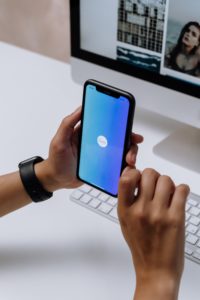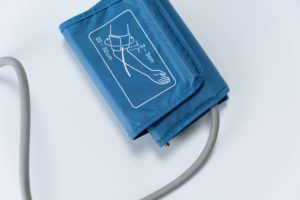Hand Hygiene: Shocking Statistics & How To Take Care of Your Hands
We’ve done the math on how many times nurses perform hand hygiene, plus some shocking facts and a few tips on how to take care of your hands as a nurse.
Our relentless research goes beyond shoes. Capsol allows us to talk all things nursing, from career advice and current news to self-care and mental health. These conversations with you, the community, and the world at large help us put our best foot forward when creating the best nursing shoes on the planet.
Healthcare depends on technology now more than ever. The pandemic of 2020 emphasized the value of tools to maximize safety, quality, and efficiency.
Nurses today are more tech-savvy than any generation before. Even bedside nursing is evolving. Digital technologies are modernizing healthcare. And we’re not just talking about computerized medical records. Here are four tech trends changing healthcare that you need to know about.

There’s a mobile app for everything these days, even therapy.
Like phones and tablets, smart devices make it easier than ever to improve mental health and wellness. There are platforms for meditation and mindfulness, symptom tracking, and even booking telemedicine appointments.
The National Institute of Mental Health says new technologies are simple but effective. Excitement about the opportunities has led to a burst in development.
Healthcare providers can help patients by becoming familiar with the latest technologies for mental health that are out there so they can educate others.
Here are a few to check out:
Telemedicine connects patients with doctors through video visits. People can conduct most of their business remotely now. So why not healthcare?
The Centers for Disease Control and Prevention (CDC) noted a 154% increase in telemedicine visits during the first part of 2020. Part of the reason is that health insurances are now paying for these services.
Both doctors and patients have been receptive to new tools for telemedicine. Access to healthcare services through virtual visits is beneficial because it provides:
Telehealth services do have limitations, though. Providers cannot perform certain assessments or tests when they are meeting a patient through a video screen. Yet, telemedicine services are still growing and changing healthcare.
Artificial Intelligence (AI) is a branch of science specializing in using computers or machines to simulate human intelligence.
Human-like robots are not a recent invention. Remember Sophia, the first AI humanoid given citizenship? She’s so old now that her biological clock is ticking, and she’s planning to have a baby.
AI in healthcare goes back decades. But today, it is changing healthcare at a frantic pace. The AI-associated healthcare market growth is expected to reach 40% and total $6.6 billion in the US alone.
Here are just a few uses for AI in healthcare.
Nurses can expect to see more of these programs and tools over the next decade.

Remote Patient Monitoring (RPM) is growing even faster than expected. RPM technologies monitor patients using devices in their homes. They collect real-time data for providers to help with diagnosis and treatment.
Imagine a blood pressure cuff, glucometer, pulse oximeter, and EKG machine set up in a patient’s home to send daily reports to the doctor. Many providers are seeing the benefits of remote monitoring programs like this. Sometimes devices can even enable two-way communication or send patients reminders like, “don’t forget to take your meds!”
Healthcare providers have begun to show interest in remote patient monitoring because Medicare and many private insurances now reimburse for monitoring and education for RPM programs.
RPM can be invaluable to nurses and other providers. It will supplement their practice by giving them more information to make better decisions. Watch for an increase in RPM jobs as this trend continues to change healthcare.
These four trends are changing how healthcare providers do their jobs. Expect to see more employers implementing these tech tools to help nurses and other workers improve efficiency, safety, and satisfaction.
Are you already using some of these innovative technologies in your practice? Share your experience!
If you enjoyed your break today, subscribe to our blog for more like this!
Author
most recent
We’ve done the math on how many times nurses perform hand hygiene, plus some shocking facts and a few tips on how to take care of your hands as a nurse.
Celebrate Pediatric Nurses Week as we talk about what pediatric nurses do, ideas for showing appreciation, and a breakdown of how to become one. Don’t miss this!
Ever wonder, what is with nurses and coffee? I mean, why do nurses love coffee? So many of us depend on that rich, hot java to jumpstart a shift.
0 Comments